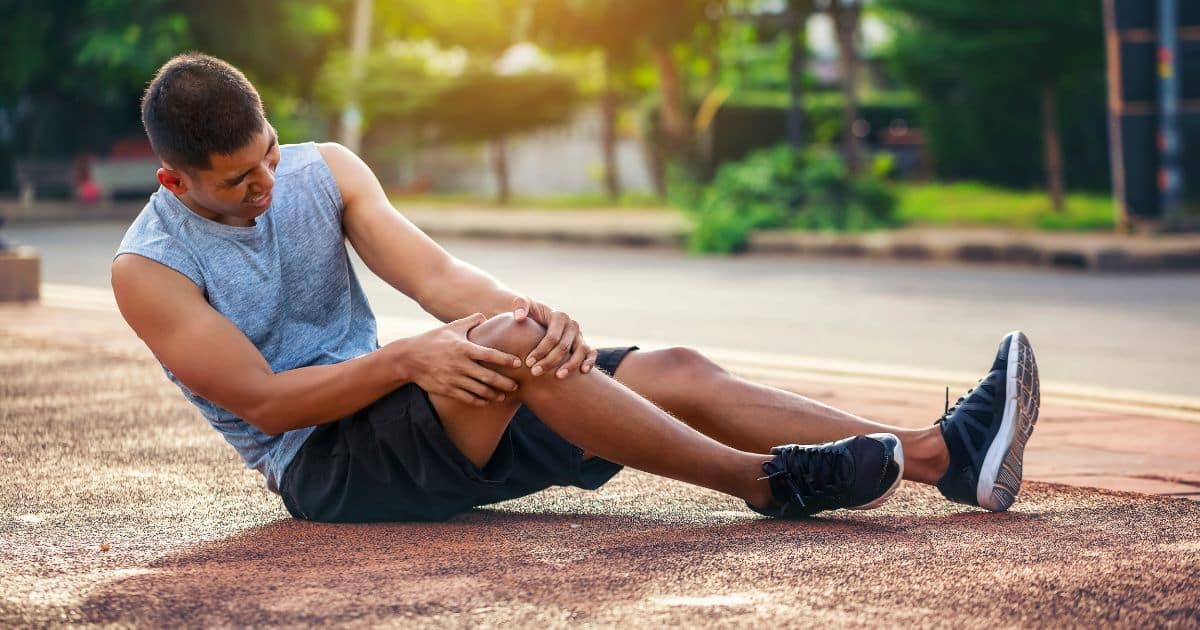Level Up Your Nutrition Game With Our Freebies
Alex
I provide nutrition coaching for endurance athletes to improve performance and body composition through a simple and flexible eating style.
Hi, I'm
ATHLETE EATING GUIDE →
LEARN MORE →
ATHLETE GROCERY SHOPPING GUIDE →
10-DAY PROTEIN-PACKED SAMPLE MEAL PLAN
READY TO FUEL?
incredible value!
The fueling guide bundle serves as your one-stop-shop for strategies to fueling before, during and after your workouts.
There are countless considerations that play into your training and race day performance as an endurance athlete. From the unpredictability of weather, to the overwhelmingly cruel early race day start time. While these factors can certainly throw major performance curveballs, so can the fear of muscle cramping during exercise.
Muscle cramping, which affects even the best-trained athletes, is a significant variable that can impair your training and race day performances. Muscle cramping during exercise can derail your adventures and leave you repeatedly and unwillingly on the sidelines. Let’s review several nutrition strategies that can lessen your risk for muscle cramping during exercise.
If you have experienced muscle cramping during exercise before, there is a good chance that unfortunately you remember it vividly. Muscle cramping (muscle spasms) is rapidly ignited contractions and tightening of your muscles. Muscle cramping can be overwhelmingly inconvenient and even more painful. Research shows that the exact cause of muscle cramps during exercise may be multifactorial though also a mystery. Some cases of muscle cramping may be due to muscular exhaustion or even biomechanical issues.
Though nutrition considerations such as fluid, electrolyte deficiencies, and inadequate post-workout nutrition can also play a role. Whatever the cause, there are several nutrition steps that you can take to help prevent muscle cramps and keep you off the sidelines– for good.
Essential Nutrition for Preventing Muscle Cramps During Exercise
There are several main nutrition parameters to assess when you are increasingly frustrated and trying to decode the root cause of muscle cramps during exercise. Most often, my dietitian team and I may need to play detective as several nutrition-related factors may play a role. Through the decoding process, we review several nutrition goals with our endurance athletes. This helps to ensure athletes are taking appropriate steps to minimize the risk of muscle cramping during exercise:
Overall hydration status:
- Are you regularly staying hydrated outside of training (ahem, the other 22.5 hours of the day)?
- What volume of electrolyte-rich fluids are you taking in during your training?
- Do you modify the volume of your fluid intake for various environmental factors such as heat and altitude?
- Are you including a wide variety of hydrating beverages and also water-dense foods consistently throughout the day (insert shameless dietitian plug for more fruits and veggies, please)?
Electrolytes:
- What electrolyte-rich foods are you regularly including at meal and snack times?
- Are you consistently utilizing electrolyte-rich sports nutrition products including gels, drinks, and chewables during training and races?
- Are you adjusting your electrolyte intake for various environmental factors?
Post-workout recovery:
- Are you going too long without refueling post-workout?
- Are you too inconsistent and haphazard with your meal and snack timing?
- Do you regularly include protein, fat and carbohydrates with most eating occurrences throughout the day?
Once we better assess common factors that influence your propensity for muscle cramping during exercise, let’s review the important strategies for prevention.
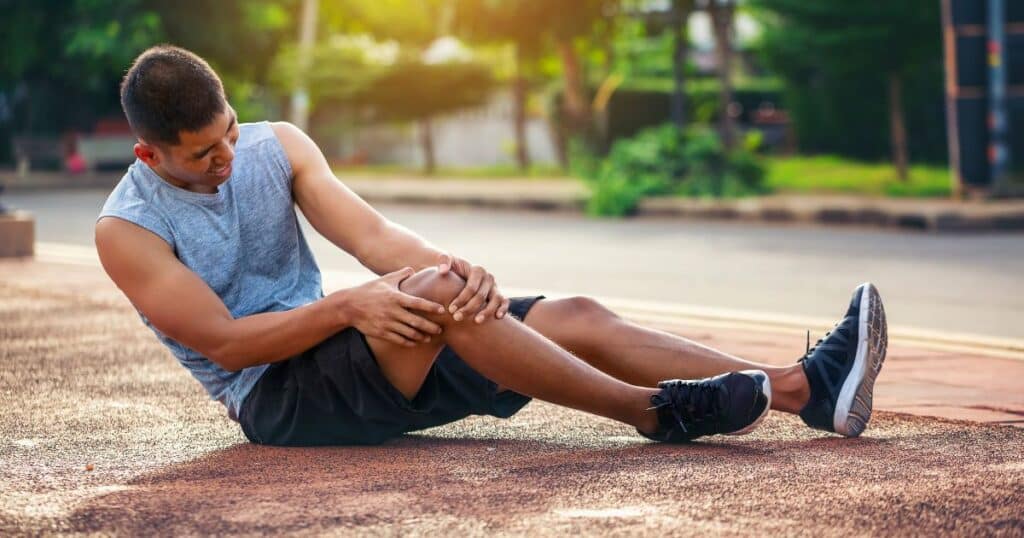
Hydration to Prevent Muscle Cramping
Maintaining proper hydration before, during, and after your training session or race is extremely important. As athletes, you exert more energy through movement and your sweat rate increases. This sweat loss can lead to a faster and greater risk of dehydration during training sessions and races. Hydration is essential for athletes, and dehydration can occur at any time in any climate. Even the smallest amount of dehydration can negatively impact athletic performance and lead to muscle cramping.
It is impossible to develop one-size-fits-all fluid and electrolyte guidelines for endurance athletes. This is in part due to the multiple factors that influence sweat rates and sweat electrolyte losses. In general though, according to the National Academy of Sports Medicine, the recommended fluid intake for men is 125-130 oz/day (approx. 16 cups) and 91-95 oz/day (approx. 12 cups) for women. Remember that this amount typically increases with training duration, intensity, and environmental factors such as hot weather and altitude.
Remember to sip on any hydrating fluids including water, fruit-infused water, decaffeinated tea, milk and milk alternatives, protein drinks, fresh fruit juice, and even cheesecake smoothies to boost your hydration. Or better yet, whip up a quick batch of post-workout popsicles to cool you down after a hard training session (recipe below). Throughout the day, be sure to regularly include water-dense fruits and vegetables– really the more, the better!
Action step: It is recommended to perform a sweat test to get an idea of your sweat loss rate. Reference our hydration blog guidelines post for instructions. Also, start tracking your water intake in an app or journal for a few days and training sessions. This will give you a good baseline assessment.
Fluid Needs During Exercise
The timing of your hydration is also a key component of your hydration status. When you should hydrate will depend on the duration of your session and the intensity or type of training you are performing. A bit of advanced planning is helpful so that you can hold yourself accountable for keeping hydrated.
Practical hydration guidelines for athletes around training sessions include:
- Consume 16 oz of fluids 1-2 hours before your session
- Continue to consume cool/cold liquids during your event. Aim for at least 5-10 oz of hydrating fluids every 15 minutes during your training or race. This is particularly important for higher intensity or training sessions with longer durations
Certainly environmental factors will play a large role in your fluid needs. Though working with a sports dietitian can better help you plan for what mother nature brings during training and come race day!
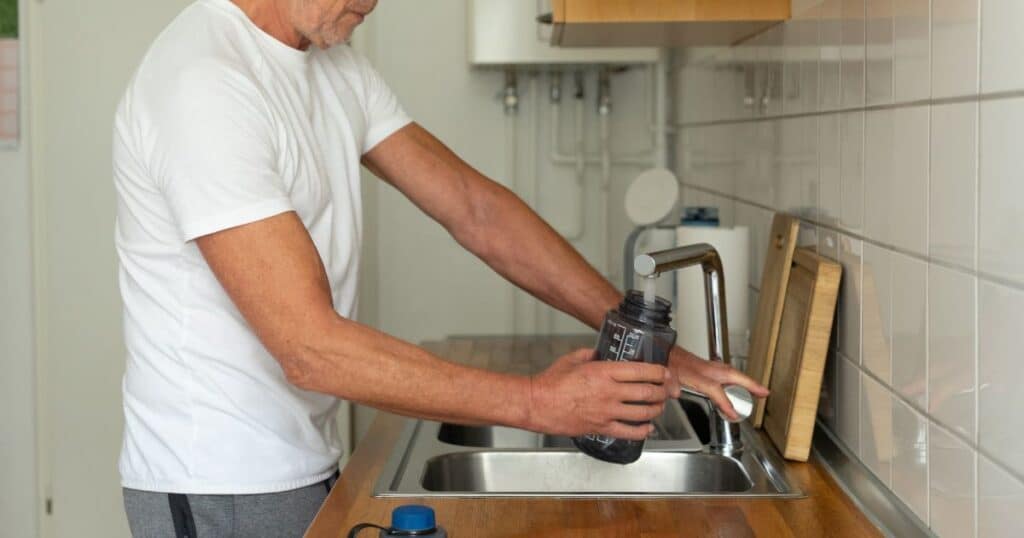
Electrolytes For Preventing Muscle Cramps
Since endurance athletes deplete electrolytes faster, there is an increased risk of developing nutrient imbalances and deficiencies. Because of this, it is important to be aware of the signs and symptoms of electrolyte imbalances. An imbalance can occur when you do not have enough (or too much) of certain minerals in your body. Signs of electrolyte imbalances to look out for:
- Chronic cramping or muscle spasms
- Frequent urination
- Headaches
- Confusion/irritability
- Nausea/vomiting
If you find yourself experiencing any of these signs or symptoms, try to focus on increasing your electrolyte consumption. When you should take electrolytes will be dependent on your training routine. There are benefits to consuming electrolytes before, during, and after training.
Endurance athletes can replenish their electrolytes in a few ways. Electrolyte powders and sports drinks are easy and portable ways to boost your intake. Electrolyte powders are mixes that you can add straight into a water bottle or hydration vest. A few popular brands of electrolyte mixes are Liquid IV, Nuun, LMNT, and Gatorade. While these can be a convenient option, you can also boost your electrolyte intake at meal and snack times through whole food sources. The four key electrolytes lost through sweat are sodium, calcium, potassium, and magnesium. Ideally you want to optimize food-rich sources regularly in your meal planning routine:
- Sodium: sunflower seeds, pretzels, bread, crackers, soup
- Potassium: avocado, potato, salmon, banana, acorn squash, white beans
- Calcium: yogurt, milk, okra, edamame, parmesan, spinach
- Magnesium: spinach, pumpkin seeds, tuna, brown rice, almonds, dark chocolate
Your electrolyte needs will vary based on your body size, training intensity, and duration of your workout or race. Some athletes find that consuming an electrolyte powder or drink 60 minutes before a workout helps improve performance and prevents dehydration.
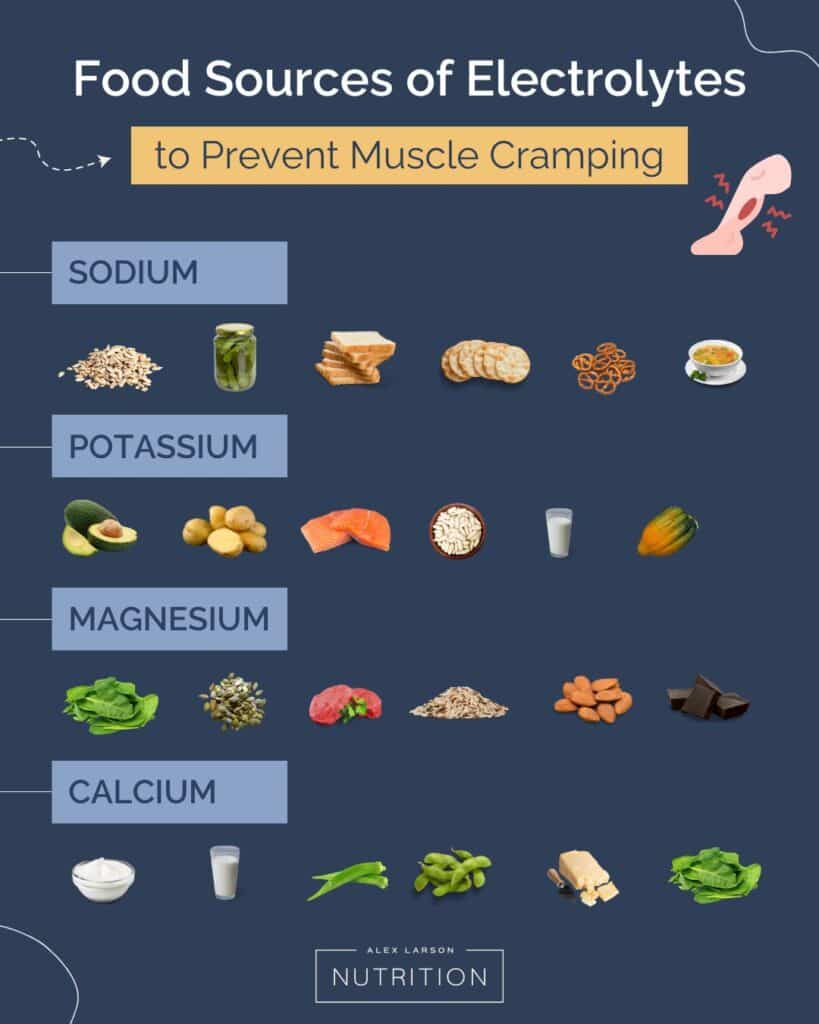
During Workout Nutrition for Muscle Cramping
When it comes to intra-workout, if your workout is going to be longer than 90 minutes, it is recommended to take electrolytes in some form during your workout. Consider carrying an electrolyte drink or a single-serve powder mix packet that you can easily add to your water bottle. Current research suggests athletes can lose around 3500-7000 mg of sodium daily. If you are exercising less than two hours, it is recommended to consume 120-160 mg of sodium and 50-100 mg of potassium per 16-ounce serving of an electrolyte drink or water. If your training is longer than two hours, you will want to increase this amount.
Post-workout is the most popular time to take electrolytes and will help replenish any electrolytes you lost through sweat during your session. If you don’t take any pre or intra-workout, then it is important to include post-workout. Your post-workout meal is also a great time to include whole-food sources of electrolytes.
Post-Workout Nutrition for Muscle Cramps
As our post-workout recovery blog post details, rehydration needs to be a top priority after a hard workout or race. Unfortunately, most athletes tend to replace only ½ or ¾ of their sweat losses through drinking during exercise. This lack of rehydration can increase the propensity for muscle cramping and also negatively affect post-workout recovery.
Be sure to experiment with a sweat test. This helps predict your estimated sweat losses throughout training and racing. This way, you know your fluid needs in different temperatures but in general, you want to aim for 20-24 oz of hydrating fluid for every pound lost.
Remember to take advantage of beverages that have calories, carbohydrates and electrolytes such as sports hydration beverages. Also remember that thirst is not always a reliable indicator of fluid losses, in fact tends to be a very late predictor of fluid needs. Also, a liquid meal can take the place of solid nutrition if you are feeling any sort of stomach upset. Though certainly review our tips for dealing with gastrointestinal distress if you are prone to this. Drinking cool water and fluids will help to lower core body temperature.
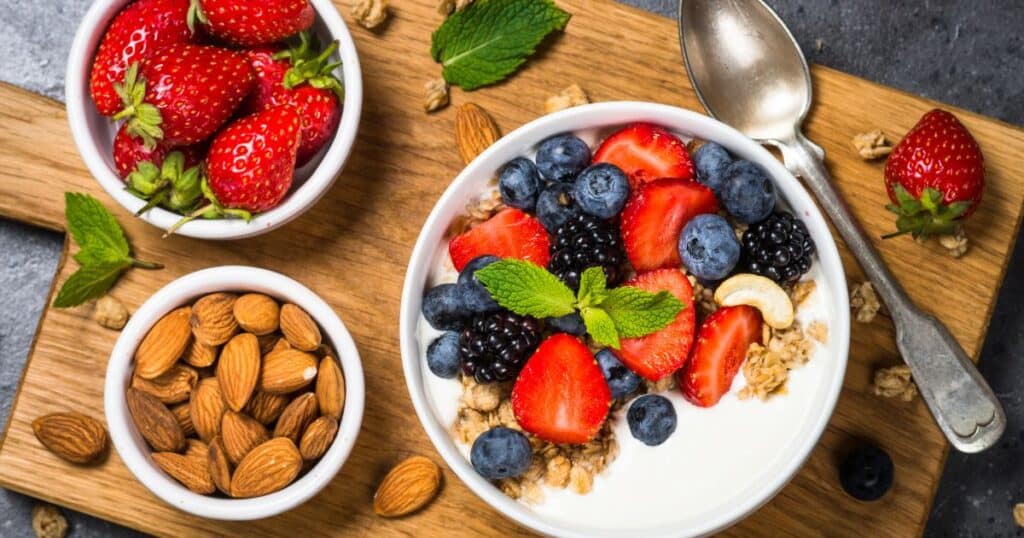
Other Considerations for Reducing Muscle Cramps During Exercise
I wholeheartedly believe in a truly flexible eating pattern for endurance athletes. Though It is also important to consider these nutrition parameters if you are struggling with persistent muscle cramps:
- Adequate macronutrient intake while keeping a healthy balance of protein, carbohydrates and healthy fats throughout the day. Inadequate intake of protein and carbohydrates particularly can consistently delay recovery. This can subsequently lead to chronic fatigue and poor biomechanics resulting in muscle cramping.
- Optimize mineral intake including calcium and magnesium. Both of these vital nutrients are involved with muscle contraction and can also prevent cramping. Be sure to include Greek yogurt, cottage cheese, cheese, beans and lentils, milk and fortified plant-based milks to optimize calcium intake. Foods that are rich in magnesium include pumpkin seeds, chia seeds, almonds, soy milk, black beans, edamame, among many others.
- If you are not able to optimize nutrient intake through foods first, consider a high-quality multivitamin supplement or additional mineral supplementation may be necessary. As always, be sure to speak with a medical provider prior to starting a nutritional supplement.
Next Steps
If your muscle cramping is severe and is limiting your day-to-day functioning (outside of exercise), it is best to seek medical advice. Persistent muscle cramps that do not subside could imply a larger medical issue at hand so it is best to seek medical care.
Level up your performance nutrition by taking steps to reduce your risk of muscle cramping. If you are looking for additional support with nutrition coaching as an athlete, reach out to my team and let’s chat.
Alex
I provide nutrition coaching for endurance athletes to improve performance and body composition through a simple and flexible eating style.
Hi, I'm
LEARN MORE →
take the quiz!
Let's discover your Endurance Nutrition IQ
How well do you know your fueling? Answer these questions and let's see where your endurance nutrition knowledge is at!
Take the quiz
level up your nutrition game with these freebies
free downloadS
Protein-Packed 10-Day Sample Meal Plan
Athlete Eating Guide
Athlete Grocery Shopping Guide
1
2
3
Inspiration to fit 120 grams of protein into your day
Planning what goes on your plate
Putting the right foods in your grocery cart
